- Home
- Michael Crichton
The Lost World
The Lost World Read online
Contents
Title Page
Dedication
Praise
Introduction: “Extinction at the K-T Boundary”
Prologue: “Life at the Edge of Chaos”
FIRST CONFIGURATION
SECOND CONFIGURATION
THIRD CONFIGURATION
FOURTH CONFIGURATION
FIFTH CONFIGURATION
SIXTH CONFIGURATION
SEVENTH CONFIGURATION
Acknowledgments
Copyright Page
To Carolyn Conger
“What really interests me is whether God had any choice in the creation of the world.”
ALBERT EINSTEIN
“Deep in the chaotic regime, slight changes in structure almost always cause vast changes in behavior. Complex controllable behavior seems precluded.”
STUART KAUFFMAN
“Sequelae are inherently unpredictable.”
IAN MALCOLM
Introduction:
“Extinction at the K-T Boundary”
The late twentieth century has witnessed a remarkable growth in scientific interest in the subject of extinction.
It is hardly a new subject—Baron Georges Cuvier had first demonstrated that species became extinct back in 1786, not long after the American Revolution. Thus the fact of extinction had been accepted by scientists for nearly three-quarters of a century before Darwin put forth his theory of evolution. And after Darwin, the many controversies that swirled around his theory did not often concern issues of extinction.
On the contrary, extinction was generally considered as unremarkable as a car running out of gas. Extinction was simply proof of failure to adapt. How species adapted was intensely studied and fiercely debated. But the fact that some species failed was hardly given a second thought. What was there to say about it? However, beginning in the 1970s, two developments began to focus attention on extinction in a new way.
The first was the recognition that human beings were now very numerous, and were altering the planet at a very rapid rate—eliminating traditional habitats, clearing the rain forest, polluting air and water, perhaps even changing global climate. In the process, many animal species were becoming extinct. Some scientists cried out in alarm; others were quietly uneasy. How fragile was the earth’s ecosystem? Was the human species engaged in behavior that would eventually lead to its own extinction?
No one was sure. Since nobody had ever bothered to study extinction in an organized way, there was little information about rates of extinction in other geological eras. So scientists began to look closely at extinction in the past, hoping to answer anxieties about the present.
The second development concerned new knowledge about the death of the dinosaurs. It had long been known that all dinosaur species had become extinct in a relatively short time at the end of the Cretaceous era, approximately sixty-five million years ago. Exactly how quickly those extinctions occurred was a subject of long-standing debate: some paleontologists believed they had been catastrophically swift, others felt the dinosaurs had died out more gradually, over a period of ten thousand to ten million years—hardly a rapid event.
Then, in 1980, physicist Luis Alvarez and three coworkers discovered high concentrations of the element iridium in rocks from the end of the Cretaceous and the start of the Tertiary—the so-called K-T boundary. (The Cretaceous was shorthanded as “K” to avoid confusion with the Cambrian and other geological periods.) Iridium is rare on earth, but abundant in meteors. Alvarez’s team argued that the presence of so much iridium in rocks at the K-T boundary suggested that a giant meteorite, many miles in diameter, had collided with the earth at that time. They theorized that the resulting dust and debris had darkened the skies, inhibited photosynthesis, killed plants and animals, and ended the reign of the dinosaurs.
This dramatic theory captured the media and public imagination. It began a controversy which continued for many years. Where was the crater from this meteor? Various candidates were proposed. There were five major periods of extinction in the past—had meteors caused them all? Was there a twenty-six-million-year cycle of catastrophe? Was the planet even now awaiting another devastating impact?
After more than a decade, these questions remained unanswered. The debate raged on—until August 1993, when, at a weekly seminar of the Santa Fe Institute, an iconoclastic mathematician named Ian Malcolm announced that none of these questions mattered, and that the debate over a meteoric impact was “a frivolous and irrelevant speculation.”
“Consider the numbers,” Malcolm said, leaning on the podium, staring forward at his audience. “On our planet there are currently fifty million species of plants and animals. We think that is a remarkable diversity, yet it is nothing compared to what has existed before. We estimate that there have been fifty billion species on this planet since life began. That means that for every thousand species that ever existed on the planet, only one remains today. Thus 99.9 percent of all species that ever lived are extinct. And mass killings account for only five percent of that total. The overwhelming majority of species died one at a time.”
The truth, Malcolm said, was that life on earth was marked by a continuous, steady rate of extinction. By and large, the average lifespan of a species was four million years. For mammals, it was a million years. Then the species vanished. So the real pattern was one of species rising, flourishing, and dying out in a few million years. On average, one species a day had become extinct throughout the history of life on the earth.
“But why?” he asked. “What leads to the rise and decline of earth’s species in a four-million-year life cycle?
“One answer is that we do not recognize how continuously active our planet is. Just in the last fifty thousand years—a geological blink of an eye—the rain forests have severely contracted, then expanded again. Rain forests aren’t an ageless feature of the planet; they’re actually rather new. As recently as ten thousand years ago, when there were human hunters on the American continent, an ice pack extended as far down as New York City. Many animals became extinct during that time.
“So most of earth’s history shows animals living and dying against a very active background. That probably explains 90 percent of extinctions. If the seas dry up, or become more salty, then of course ocean plankton will all die. But complex animals like dinosaurs are another matter, because complex animals have insulated themselves—literally and figuratively—against such changes. Why do complex animals die out? Why don’t they adjust? Physically, they seem to have the capacity to survive. There appears to be no reason why they should die. And yet they do.
“What I wish to propose is that complex animals become extinct not because of a change in their physical adaptation to their environment, but because of their behavior. I would suggest that the latest thinking in chaos theory, or nonlinear dynamics, provides tantalizing hints to how this happens.
“It suggests to us that behavior of complex animals can change very rapidly, and not always for the better. It suggests that behavior can cease to be responsive to the environment, and lead to decline and death. It suggests that animals may stop adapting. Is this what happened to the dinosaurs? Is this the true cause of their disappearance? We may never know. But it is no accident that human beings are so interested in dinosaur extinction. The decline of the dinosaurs allowed mammals—including us—to flourish. And that leads us to wonder whether the disappearance of the dinosaurs is going to be repeated, sooner or later, by us as well. Whether at the deepest level the fault lies not in blind fate—in some fiery meteor from the skies—but in our own behavior. At the moment, we have no answer.”
And then he smiled.
“But I have a few suggestions,” he said.
Prologue:
“Life at the Edge of Chaos”
The Santa Fe Institute was housed in a series of buildings on Canyon Road which had formerly been a convent, and the Institute’s seminars were held in a room which had served as a chapel. Now, standing at the podium, with a shaft of sunlight shining down on him, Ian Malcolm paused dramatically before continuing his lecture.
Malcolm was forty years old, and a familiar figure at the Institute. He had been one of the early pioneers in chaos theory, but his promising career had been disrupted by a severe injury during a trip to Costa Rica; Malcolm had, in fact, been reported dead in several newscasts. “I was sorry to cut short the celebrations in mathematics departments around the country,” he later said, “but it turned out I was only slightly dead. The surgeons have done wonders, as they will be the first to tell you. So now I am back—in my next iteration, you might say.”
Dressed entirely in black, leaning on a cane, Malcolm gave the impression of severity. He was known within the Institute for his unconventional analysis, and his tendency to pessimism. His talk that August, entitled “Life at the Edge of Chaos,” was typical of his thinking. In it, Malcolm presented his analysis of chaos theory as it applied to evolution.
He could not have wished for a more knowledgeable audience. The Santa Fe Institute had been formed in the mid-1980s by a group of scientists interested in the implications of chaos theory. The scientists came from many fields—physics, economics, biology, computer science. What they had in common was a belief that the complexity of the world concealed an underlying order which had previously eluded science, and which would be revealed by chaos theory, now known as complexity theory. In the words of one, complexity theory was “the science of the twenty-first century.”
The Institute had explored the behavior of a great variety of complex systems—corporations in the marketplace, neurons in the human brain, enzyme cascades within a single cell, the group behavior of migratory birds—systems so complex that it had not been possible to study them before the advent of the computer. The research was new, and the findings were surprising.
It did not take long before the scientists began to notice that complex systems showed certain common behaviors. They started to think of these behaviors as characteristic of all complex systems. They realized that these behaviors could not be explained by analyzing the components of the systems. The time-honored scientific approach of reductionism—taking the watch apart to see how it worked—didn’t get you anywhere with complex systems, because the interesting behavior seemed to arise from the spontaneous interaction of the components. The behavior wasn’t planned or directed; it just happened. Such behavior was therefore called “self-organizing.”
“Of the self-organizing behaviors,” Ian Malcolm said, “two are of particular interest to the study of evolution. One is adaptation. We see it everywhere. Corporations adapt to the marketplace, brain cells adapt to signal traffic, the immune system adapts to infection, animals adapt to their food supply. We have come to think that the ability to adapt is characteristic of complex systems—and may be one reason why evolution seems to lead toward more complex organisms.”
He shifted at the podium, transferring his weight onto his cane. “But even more important,” he said, “is the way complex systems seem to strike a balance between the need for order and the imperative to change. Complex systems tend to locate themselves at a place we call ‘the edge of chaos.’ We imagine the edge of chaos as a place where there is enough innovation to keep a living system vibrant, and enough stability to keep it from collapsing into anarchy. It is a zone of conflict and upheaval, where the old and the new are constantly at war. Finding the balance point must be a delicate matter—if a living system drifts too close, it risks falling over into incoherence and dissolution; but if the system moves too far away from the edge, it becomes rigid, frozen, totalitarian. Both conditions lead to extinction. Too much change is as destructive as too little. Only at the edge of chaos can complex systems flourish.”
He paused. “And, by implication, extinction is the inevitable result of one or the other strategy—too much change, or too little.”
In the audience, heads were nodding. This was familiar thinking to most of the researchers present. Indeed, the concept of the edge of chaos was very nearly dogma at the Santa Fe Institute.
“Unfortunately,” Malcolm continued, “the gap between this theoretical construct and the fact of extinction is vast. We have no way to know if our thinking is correct. The fossil record can tell us that an animal became extinct at a certain time, but not why. Computer simulations are of limited value. Nor can we perform experiments on living organisms. Thus, we are obliged to admit that extinction—untestable, unsuited for experiment—may not be a scientific subject at all. And this may explain why the subject has been embroiled in the most intense religious and political controversy. I would remind you that there is no religious debate about Avogadro’s number, or Planck’s constant, or the functions of the pancreas. But about extinction, there has been perpetual controversy for two hundred years. And I wonder how it is to be solved if—Yes? What is it?”
At the back of the room, a hand had gone up, waving impatiently. Malcolm frowned, visibly annoyed. The tradition at the Institute was that questions were held until the presentation ended; it was poor form to interrupt a speaker. “You had a question?” Malcolm asked.
From the back of the room, a young man in his early thirties stood. “Actually,” the man said, “an observation.”
The speaker was dark and thin, dressed in khaki shirt and shorts, precise in his movements and manner. Malcolm recognized him as a paleontologist from Berkeley named Levine, who was spending the summer at the Institute. Malcolm had never spoken to him, but he knew his reputation: Levine was generally agreed to be the best paleobiologist of his generation, perhaps the best in the world. But most people at the Institute disliked him, finding him pompous and arrogant.
“I agree,” Levine continued, “that the fossil record is not helpful in addressing extinction. Particularly if your thesis is that behavior is the cause of extinction—because bones don’t tell us much about behavior. But I disagree that your behavioral thesis is untestable. In point of fact, it implies an outcome. Although perhaps you haven’t yet thought of it.”
The room was silent. At the podium, Malcolm frowned. The eminent mathematician was not accustomed to being told he had not thought through his ideas. “What’s your point,” he said.
Levine appeared indifferent to the tension in the room. “Just this,” he said. “During the Cretaceous, Dinosauria were widely distributed across the planet. We have found their remains on every continent, and in every climatic zone—even in the Antarctic. Now. If their extinction was really the result of their behavior, and not the consequence of a catastrophe, or a disease, or a change in plant life, or any of the other broad-scale explanations that have been proposed, then it seems to me highly unlikely that they all changed their behavior at the same time, everywhere. And that in turn means that there may well be some remnants of these animals still alive on the earth. Why couldn’t you look for them?”
“You could,” Malcolm said coldly, “if that amused you. And if you had no more compelling use for your time.”
“No, no,” Levine said earnestly. “I’m quite serious. What if the dinosaurs did not become extinct? What if they still exist? Somewhere in an isolated spot on the planet.”
“You’re talking about a Lost World,” Malcolm said, and heads in the room nodded knowingly. Scientists at the Institute had developed a shorthand for referring to common evolutionary scenarios. They spoke of the Field of Bullets, the Gambler’s Ruin, the Game of Life, the Lost World, the Red Queen, and Black Noise. These were well-defined ways of thinking about evolution. But they were all—
“No,” Levine said stubbornly. “I am speaking literally.”
“Then you’re badly deluded,” Malcolm said, with a dismissive wave of his hand. He turned away from the audience, and wal
ked slowly to the blackboard. “Now, if we consider the implications of the edge of chaos, we may begin by asking ourselves, what is the minimal unit of life? Most contemporary definitions of life would include the presence of DNA, but there are two examples which suggest to us that this definition is too narrow. If you consider viruses and so-called prions, it is clear that life may in fact exist without DNA. . . .”
At the back of the room, Levine stared for a moment. Then, reluctantly, he sat down, and began to make notes.
The Lost World
Hypothesis
The lecture ended, Malcolm hobbled across the open courtyard of the Institute, shortly after noon. Walking beside him was Sarah Harding, a young field biologist visiting from Africa. Malcolm had known her for several years, since he had been asked to serve as an outside reader for her doctoral thesis at Berkeley.
Crossing the courtyard in the hot summer sun, they made an unlikely pair: Malcolm dressed in black, stooped and ascetic, leaning on his cane; Harding compact and muscular, looking young and energetic in shorts and a tee shirt, her short black hair pushed up on her forehead with sunglasses. Her field of study was African predators, lions and hyenas. She was scheduled to return to Nairobi the next day.
The two had been close since Malcolm’s surgery. Harding had been on a sabbatical year in Austin, and had helped nurse Malcolm back to health, after his many operations. For a while it seemed as if a romance had blossomed, and that Malcolm, a confirmed bachelor, would settle down. But then Harding had gone back to Africa, and Malcolm had gone to Santa Fe. Whatever their former relationship had been, they were now just friends.
They discussed the questions that had come at the end of his lecture. From Malcolm’s point of view, there had been only the predictable objections: that mass extinctions were important; that human beings owed their existence to the Cretaceous extinction, which had wiped out the dinosaurs and allowed the mammals to take over. As one questioner had pompously phrased it, “The Cretaceous allowed our own sentient awareness to arise on the planet.”

 Dragon Teeth
Dragon Teeth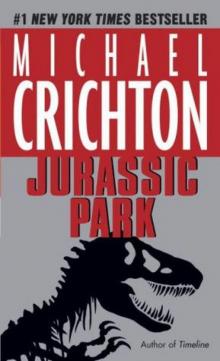 Jurassic Park
Jurassic Park Micro
Micro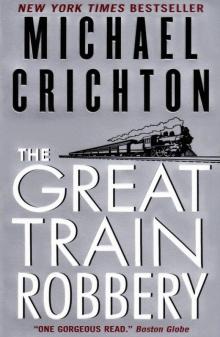 The Great Train Robbery
The Great Train Robbery The Andromeda Strain
The Andromeda Strain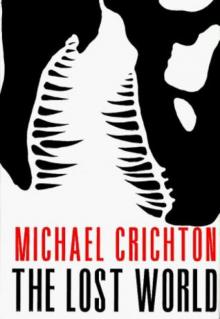 The Lost World
The Lost World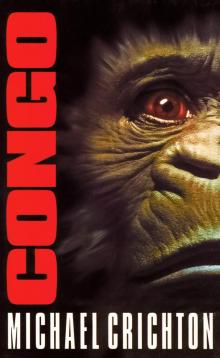 Congo
Congo Travels
Travels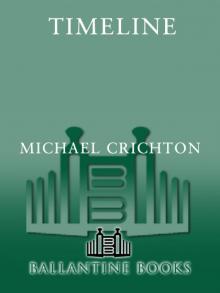 Timeline
Timeline Sphere
Sphere Westworld
Westworld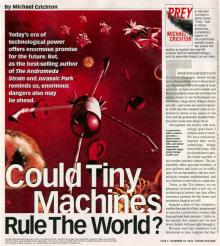 Prey
Prey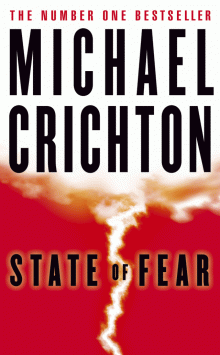 State Of Fear
State Of Fear Next
Next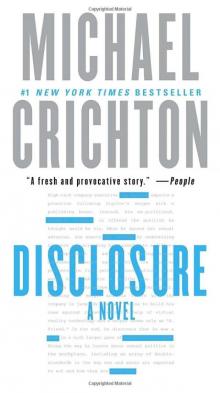 Disclosure
Disclosure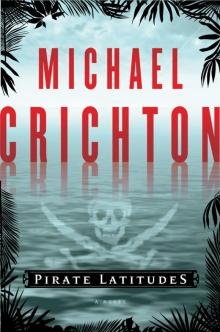 Pirate Latitudes
Pirate Latitudes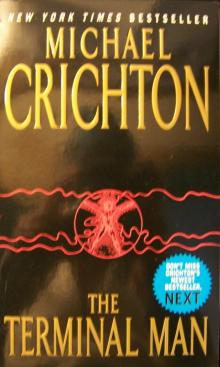 The Terminal Man
The Terminal Man Five Patients
Five Patients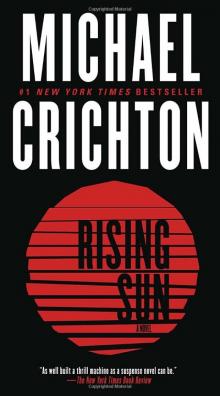 Rising Sun
Rising Sun Binary
Binary The Andromeda Evolution
The Andromeda Evolution Airframe
Airframe Easy Go
Easy Go Drug of Choice
Drug of Choice Odds On: A Novel
Odds On: A Novel Scratch One
Scratch One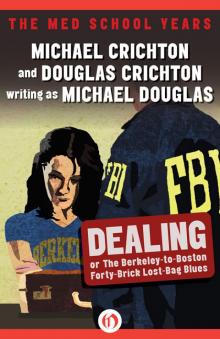 Dealing or The Berkeley-to-Boston Forty-Brick Lost-Bag Blues
Dealing or The Berkeley-to-Boston Forty-Brick Lost-Bag Blues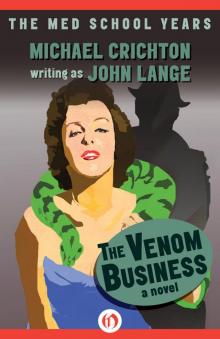 Venom Business
Venom Business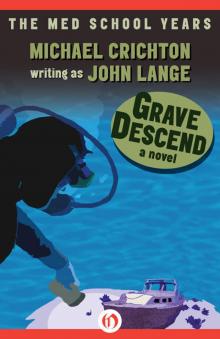 Grave Descend
Grave Descend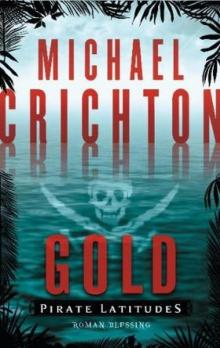 Gold - Pirate Latitudes
Gold - Pirate Latitudes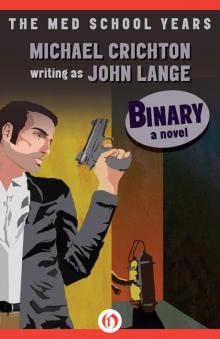 Binary: A Novel
Binary: A Novel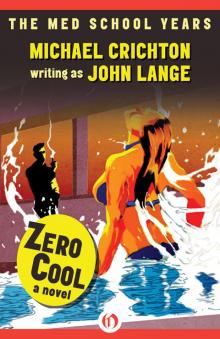 Zero Cool
Zero Cool Delos 1 - Westworld
Delos 1 - Westworld